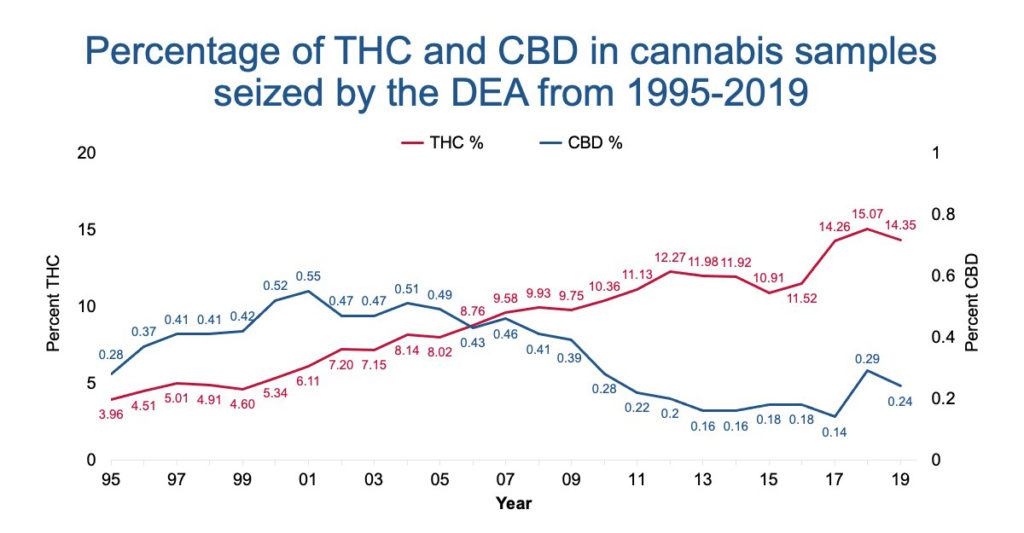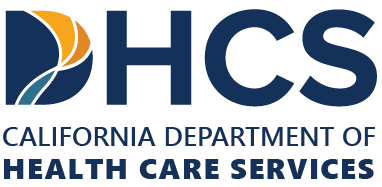Many parents (and even grandparents) we work with assume that marijuana is the same as it ever was – weed is weed, right? Not so fast. If you assume that the marijuana your child has access to is the same weed you and your peers had access to back in high school, think again.
The federal government has been testing marijuana potency since around 1972 in something called the Potency Monitoring Program (due to technological constraints in cannabis testing labs, it wasn’t possible to test marijuana potency prior to the 60’s). It has shown a definite increase in the strength of marijuana over the decades.
While the Potency Monitoring Program has admitted its own limitations in testing methods from decades past (outdated testing methods, small sample sizes, and sampling of months-old samples likely limited the accuracy of potency figures through the 70’s and 80’s), it is true that marijuana potency has increased.
This is especially true in the past 20-25 years, as testing techniques have improved and sample sizes have reached into the 1000’s per year.
Marijuana potency testing shows we have the highest THC Weed in history
A two-decades long study (1995-2014) of the potency of samples confiscated by the DEA showed a clear trend upward from the mid-90’s. This study includes over 38,000 samples of marijuana plants over the two decades. We’ll let the study’s results speak for themselves:
- The potency of illicit cannabis plant materials has risen consistently since 1995.
- THC content in 1995 was approximately 4%, whereas by 2014 it had risen to around 12%.
- CBD content in cannabis plants has fallen on average. The THC to CBD ratio has therefore gone from 14 times in 1995 to 80 times in 2014.
Alternatively, here is the included graph from the Potency Monitoring Program’s quarterly report #146.

You can see that THC levels have continued to climb since 2014, reaching into the 14-15% range.
Why is this happening? Especially since the onset of the medical marijuana movement and the push for recreational legalization, growers have been working to make higher and higher THC content strains in order to compete with one another.
A simple Google search for “highest THC content ever recorded” returns page after page of articles claiming that strains with names like “Bruce Banner” or “Ghost Train Haze” are the strongest in the world, with concentrations ranging form 27-44%!
High Potency THC Concentrates
The other elephant in the room in the marijuana game right now is the popularity of new cannabis products known as THC concentrates. Nicknamed, oil, shatter, wax, or dabs, these are generally different forms of the same thing: THC that has been extracted from the marijuana plant through various methods. In many ways, this is a new class of marijuana which draws more parallels to some of the traditional “hard” narcotics.
But how strong are they actually?
The National Institute on Drug Abuse compiled some data on this topic. They report that solvent-based marijuana concentrates can have an average THC level of about 54-69%, whereas non-solvent-based concentrates have a lower average of 39-60%. They even report that some of the samples can have upwards of 80% THC content.
Why it matters
In our experience, this has led to a new wave of marijuana related consequences for young adults and teens:
High THC cannabis is now the norm. New conditions such as marijuana hyperemesis and marijuana induced renal failure (kidney failure) have appeared on the horizon. Anecdotally, a higher percentage of our adolescent and young adult substance abuse program’s intakes have included complications from marijuana-induced psychosis.
Marijuana used to have the reputation as the drug that wouldn’t make you overdose. In 2021, this is no longer the case. This scholarly review on marijuana poisoning discusses that deaths have begun to pop up in relation to eating food products containing concentrated THC butter.
For young people, this new world of marijuana is opening doors to potential health, mental health, and social risks that weren’t present in the past. According to one 2019 study, 33% of 8th-, 10th-, and 12th-graders reported lifetime cannabis use and 24% reported lifetime concentrate use.
Ironically, many cannabis users debate whether marijuana potency testing is even a good measure of a marijuana strain. Some claim that super-high THC cannabis strains don’t get the user more “high” than low-THC strains. This begs the question – are the individuals who use these products needlessly opening themselves up to potential consequences without even knowing it?
In Conclusion
In short, the THC percentage in weed has gone up, with new high THC strains coming out each year. Perceived harm among young people has gone down, and legalization efforts have lowered the barrier to obtaining medical-grade marijuana for youth. Additionally, marijuana is decisively the most commonly used drug by teens. Elizabeth Stuyt, MD, an addiction psychiatrist, puts it perfectly in a 2018 article in Missouri Medicine:
“There is absolutely no research that indicates this level of THC is beneficial for any medical condition. The purpose of these products is to produce a high, and the increased potency makes them potentially more dangerous and more likely to result in addiction.”
We couldn’t have said it better.






